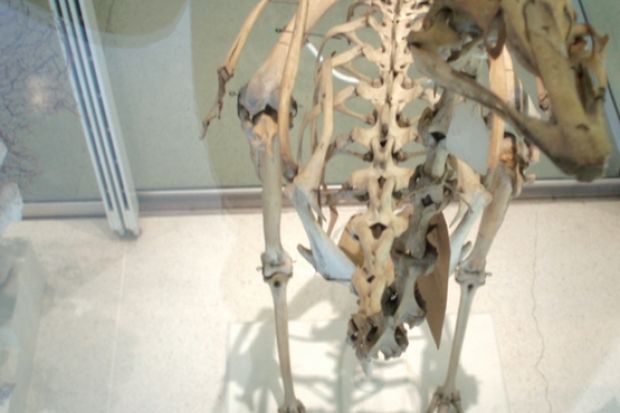While the Beagle sailed around the coast of South America, Darwin spent much of his time exploring on land.
While riding south from Brazil to Argentina, he kept watch for what he believed to be a new species of rhea.
He was unable to find a specimen to study, however, until his shipmates shot one and served it as Christmas dinner in 1833.
Darwin recounts in his Journal of Researches: "The bird was cooked and eaten before my memory returned.
"Fortunately, the head, neck, wings, many of the larger feathers and a large part of the skin had been preserved. From these, a near perfect specimen has been put together."
The parts were brought back to Britain, where they were named as a new species of rhea, Rhea darwinii.
However, it later emerged that Darwin's discovery was not new at all - a specimen had already been collected by the French naturalist Alcide d'Orbigny, who had named it Pterocnemia pennata.
This skeleton forms part of Beetles, Finches and Barnacles: The Zoological Collections of Charles Darwin, which is held at the University Museum of Zoology, Cambridge.
Send suggestions for this series on the treasures, oddities and curiosities owned by universities across the world to: matthew.reisz@tsleducation.com
Register to continue
Why register?
- Registration is free and only takes a moment
- Once registered, you can read 3 articles a month
- Sign up for our newsletter
Subscribe
Or subscribe for unlimited access to:
- Unlimited access to news, views, insights & reviews
- Digital editions
- Digital access to THE’s university and college rankings analysis
Already registered or a current subscriber? Login
